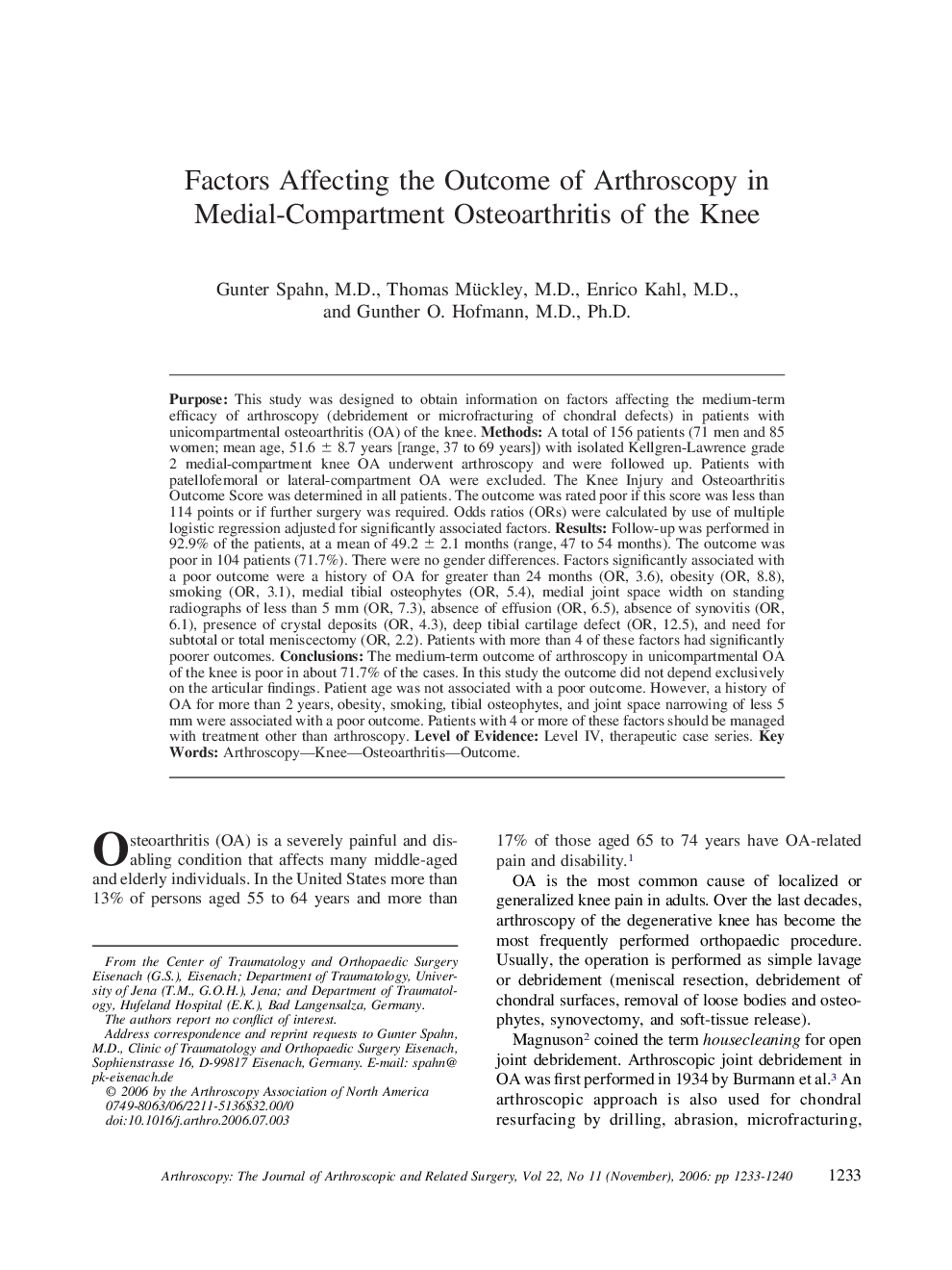| Article ID | Journal | Published Year | Pages | File Type |
|---|---|---|---|---|
| 4047070 | Arthroscopy: The Journal of Arthroscopic & Related Surgery | 2006 | 8 Pages |
Purpose: This study was designed to obtain information on factors affecting the medium-term efficacy of arthroscopy (debridement or microfracturing of chondral defects) in patients with unicompartmental osteoarthritis (OA) of the knee. Methods: A total of 156 patients (71 men and 85 women; mean age, 51.6 ± 8.7 years [range, 37 to 69 years]) with isolated Kellgren-Lawrence grade 2 medial-compartment knee OA underwent arthroscopy and were followed up. Patients with patellofemoral or lateral-compartment OA were excluded. The Knee Injury and Osteoarthritis Outcome Score was determined in all patients. The outcome was rated poor if this score was less than 114 points or if further surgery was required. Odds ratios (ORs) were calculated by use of multiple logistic regression adjusted for significantly associated factors. Results: Follow-up was performed in 92.9% of the patients, at a mean of 49.2 ± 2.1 months (range, 47 to 54 months). The outcome was poor in 104 patients (71.7%). There were no gender differences. Factors significantly associated with a poor outcome were a history of OA for greater than 24 months (OR, 3.6), obesity (OR, 8.8), smoking (OR, 3.1), medial tibial osteophytes (OR, 5.4), medial joint space width on standing radiographs of less than 5 mm (OR, 7.3), absence of effusion (OR, 6.5), absence of synovitis (OR, 6.1), presence of crystal deposits (OR, 4.3), deep tibial cartilage defect (OR, 12.5), and need for subtotal or total meniscectomy (OR, 2.2). Patients with more than 4 of these factors had significantly poorer outcomes. Conclusions: The medium-term outcome of arthroscopy in unicompartmental OA of the knee is poor in about 71.7% of the cases. In this study the outcome did not depend exclusively on the articular findings. Patient age was not associated with a poor outcome. However, a history of OA for more than 2 years, obesity, smoking, tibial osteophytes, and joint space narrowing of less 5 mm were associated with a poor outcome. Patients with 4 or more of these factors should be managed with treatment other than arthroscopy. Level of Evidence: Level IV, therapeutic case series.
